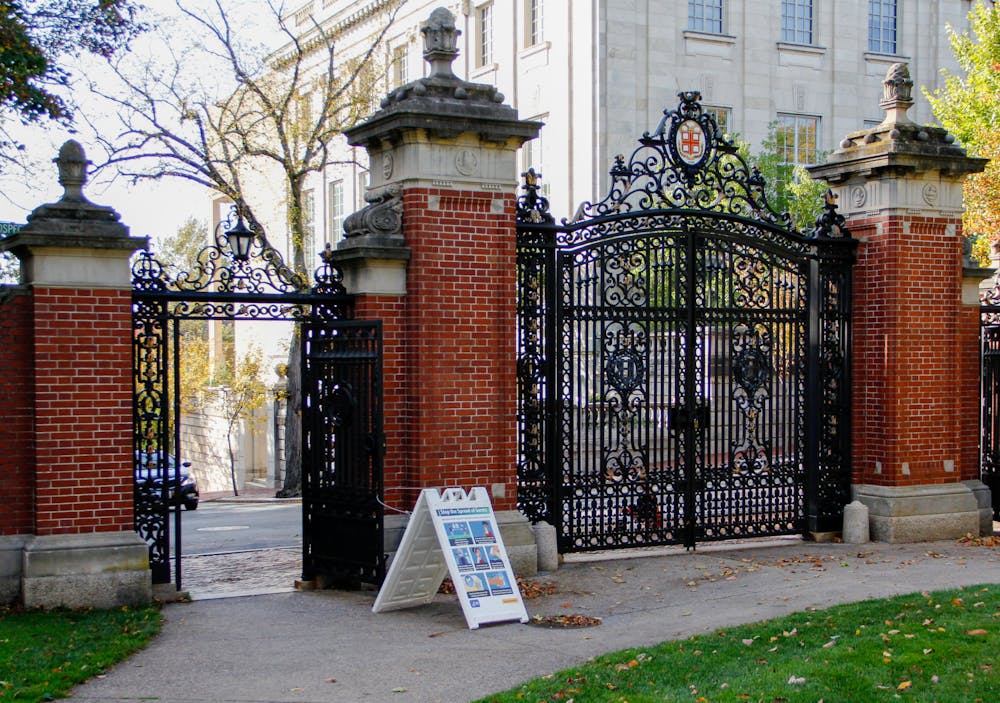Last month, a lawsuit alleged that the University and 15 other schools did not maintain the need-blind admissions policies required for a legal antitrust exemption and therefore fixed “the net price of attendance,” according to a Jan. 10 press release from the plaintiffs’ legal team.
Court records show that the suit is not yet moving toward trial — and legal scholars said that the process ahead may take years as a result of both the size and complexity of the case. The lawsuit was filed in the Northern District of Illinois and is being presided over by Judge Matthew Kennelly.
At the heart of the suit is the Improving America’s Schools Act of 1994. In 1989, the Department of Justice began an antitrust investigation into 57 colleges and universities that resulted in Sherman Antitrust Act filings against the eight Ivy League schools and the Massachusetts Institute of Technology in 1991, which alleged the schools illegally conspired to restrict competition for financial aid.
Section 568 of the law allows “two or more” institutions to use the same standards for determining aid and employ the same financial aid application form — so long as they review applications individually and in a need-blind manner.
In response to the law, 28 university presidents formed the 568 Presidents Group — referred to by the plaintiffs as the 568 Cartel in this suit — in 1998, though membership has fluctuated over the years. The 568 Presidents Group website says that the group maintains a “need-based financial aid system that is understandable and fair and will bring greater clarity (and) simplicity … to the process of assessing each family’s ability to pay for college.”
A website sponsored by litigators representing the plaintiffs alleged that 16 elite universities have “systematically violated the terms of (the) antitrust exemption by failing to admit students on a fully need-blind basis or,” in the University’s case, “by colluding with institutions who failed in that way.”
University Spokesperson Brian Clark declined to comment in an email to The Herald because the University’s response to the claims “will come not through the news media, but through the judicial process directly.”
The complaint by the plaintiffs further alleges that some of the institutions are “need-aware” for students on the waitlist or transfer students, that they engage in “wealth favoritism” by prioritizing applicants whose families have the potential to make substantial contributions and, for some of the universities, that they use software that collects data on zip codes or parental occupation.
In the University’s case, the complaint specifies that seven defendants — including Brown — were at one point members of the 568 group and therefore “conspired with the other defendants,” regardless of whether they adhered to need-blind admissions policies.
“We have conducted a substantial investigation of these practices, which we allege are unlawful,” wrote Robert Gilbert, a litigator for the plaintiffs, in an email to The Herald. “We plan to vindicate the rights of more than 170,000 financial aid students and their families who we believe have been overcharged by these elite universities.”
The suit requests damages for students who attended each of the institutions during the period of time when the schools were members of the group, as well as a permanent injunction preventing the involved universities from continuing to conspire. The complaint alleges that the total damages amount to hundreds of millions of dollars.
Daniel Crane, a law professor at the University of Michigan, told The Herald that he’s “skeptical” that the suit would lead to “really large damages.” Since a number of other “elite schools” weren’t involved in the collusion, he argued that students likely did not face monetary harm from the collusion — unless the members of the 568 group had “market power collectively.”
Still, Crane noted that there is precedent for this type of suit. He cited the initial 1991 antitrust suit pursued by the Justice Department and said that under U.S. antitrust laws, private plaintiffs are able to bring a lawsuit.
Crane explained that the next step in the case is likely discovery, during which each party involved in the lawsuit can obtain evidence from the other through written questioning, document requests, requests for admissions and depositions.
He guessed that there could be “millions of documents produced,” as well as “depositions of key people” from the involved universities, and that it “would be at least three or four years” before the court reaches a resolution.
Crane also noted that he couldn’t make a judgment on the likelihood of the plaintiffs winning the case without access to all of the information, but thinks the lawsuit could be “serious” if a “substantial group of colleges” considered need in their application process.
Mark Lemley, a professor at Stanford Law School, wrote in an email to The Herald that if the plaintiffs’ claims are true, “the defendant schools might not be entitled to the antitrust exemption, and might be at risk if they use pooled financial data.”
But Crane cautioned that schools should be able to collaborate with each other to shift limited financial aid funds to higher-need families.
When asked about what students should take away from the suit, Crane claimed that “there’s an integrity issue” and that if universities claim to be need-blind, “they should be held accountable to that.”
“If I was attending a school that was allegedly cheating that commitment, I’d want to know,” Crane said. “I would want to hear a response from these schools and an explanation of what’s going on.”
Jack Tajmajer was a Metro editor at The Herald.





